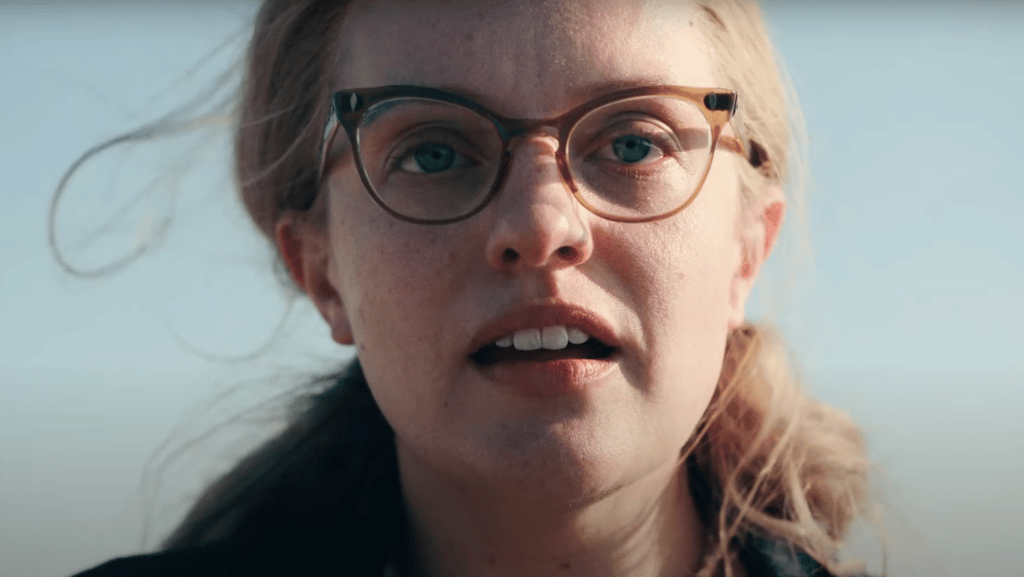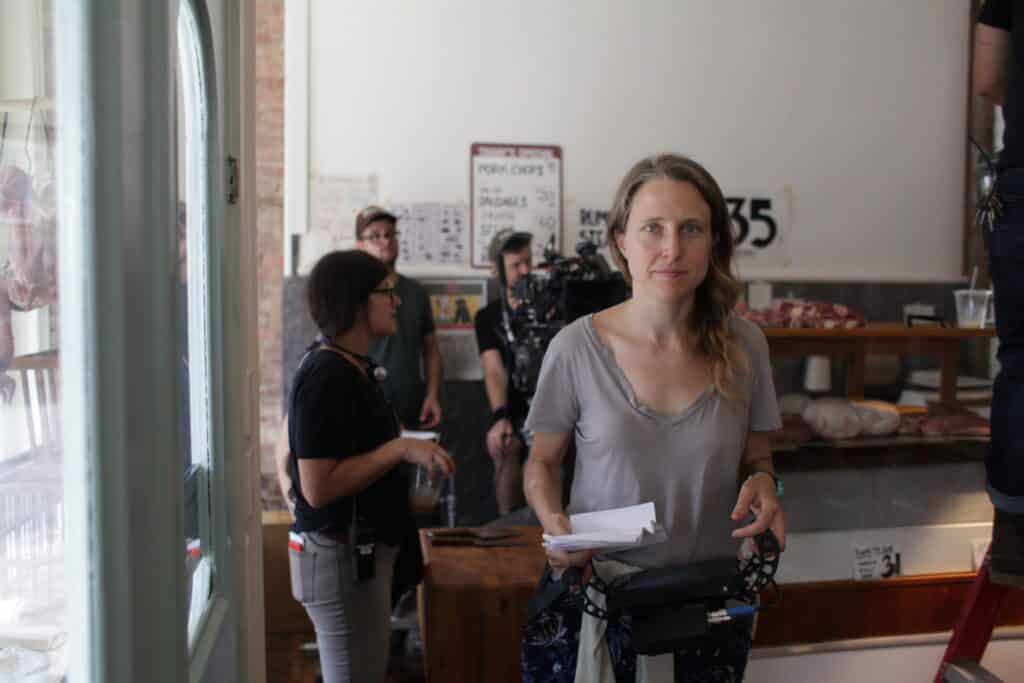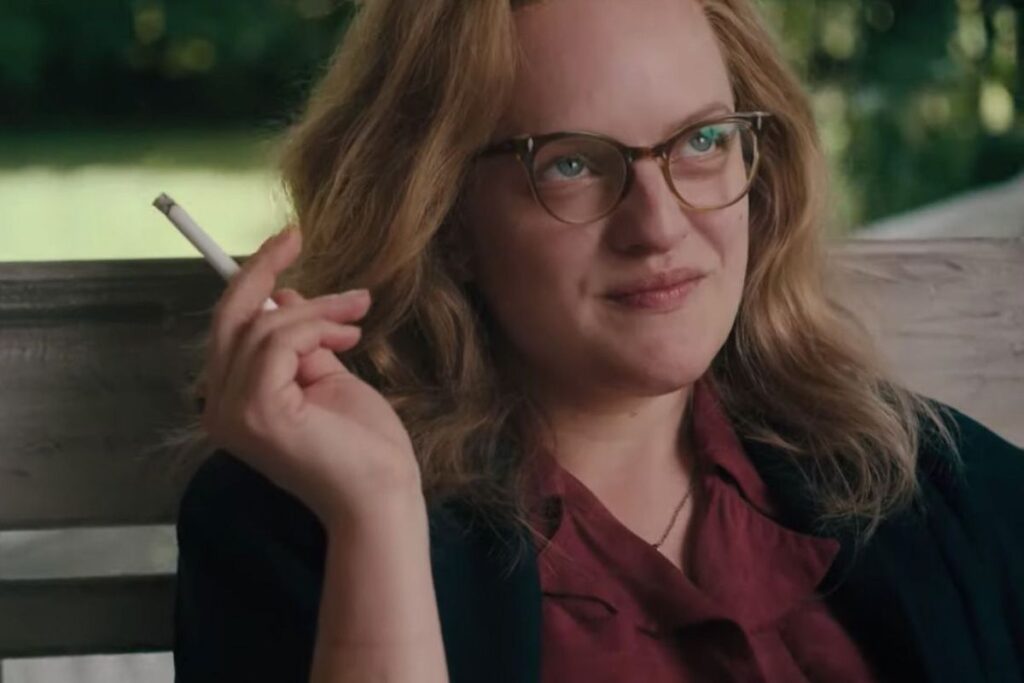Read also:
How to Watch FX Live Without CableHow To Watch AMC Without CableHow to Watch ABC Without CableHow to Watch Paramount Network Without CableDirector of Shirley Josephine Decker talks about Elisabeth Moss, structuring scenes, and taking creative license with a real-life figure.
More than most – perhaps more than any other filmmaker working today – to watch a Josephine Decker film is to be plunged into subjectivity itself. Look no further than her breakout feature, Madeline’s Madeline, which interrogated questions of authorship and mental health through an incredible debut performance from Helena Howard, seen through a woozy, experimental lens.
Two years later, Decker’s follow up has arrived in the form of Shirley, an equally inventive, impressionistic portrait of writer Shirley Jackson, played here by human powerhouse Elisabeth Moss. The film is set just after the author has published her groundbreaking short story The Lottery, as she and her husband Stanley (Michael Stuhlbarg) invite a young couple into their home.
But what initially feels like a gracious invitation is quickly revealed to be a prickly proposition. As Shirley and Stanley prey on Rose (Odessa Young) and Fred (Logan Lerman), the ensuing psychodrama produces a portrait of an artist rarely allowed within the strict confines of the biopic genre. Then again, as Decker explained to me, Shirley isn’t a biopic. It’s so much more:
(You can also listen to Editor-in-chief Clint Worthington’s conversation with Shirley composer Tamar-kali below.)
Congratulations on Shirley. I want to start at the start: what attracted you to this project, and this material in the first place?
JD: Well, Sarah Gubbins had written a script that was just full of the most blazing dialogue and had incredible female characters, which is usually the thing that draws me in, and I loved that this film was centered around these two women who were so different. They’re so witty and alive, and so I was drawn in immediately. And also, obviously, I had just gotten really in touch [with the work of] the real Shirley Jackson – I had read her book We Have Always Live in the Castle, so I was just feeling a little on fire with all the magic of Shirley.
I think it’s fair to say you have a very distinct filmmaking style. When you read the script, did you immediately know that this script would be a match for your cinematography and direction? Were there any changes or challenges going from the page to the screen?
You know, I really thought I was going to make a movie that looked a little bit more like a Hitchcock film! [laughs] This doesn’t look anything like a Hitchcock film, I thought the shots were going to be like, super wide. I remember watching Rebecca with the DP [Sturla Brandth Grøvlen] but I think, when we got into the world of Shirley, it just felt like it wanted to be a little more intimate and raw, that there’s this feeling of incompleteness and searching that the camera wanted to do, and we kind of let it do that. There’s a real journey that the cinematography hopefully takes the audience on, and feeling that this eye through which you’re viewing the film is a very active participant in the project.
We had this idea of like, a more haunted house kind of look thing, and we just felt like this does not work. We need to do the thing that feels organic to the project and our skills and Sturla, our DP, is such an incredible handheld operator that we just felt like when he was able to be spontaneous and be with the actors so much magic was happening, so that’s what we did!

Your films have such a life to them, and yeah, the camera has such a wandering gaze. I was wondering: do you plan out every frame of these shots beforehand? Or do you give your cinematographer a lot of room to do improvisation on-set? How do you find that balance?
It’s a combination. We came up with an approach in preparation and different rules for the camera, so we had maybe four or five approaches that we would apply to the scene. So you sort-of apply the approach – of them was called “smush.” We had “smush,” “spirit,” “float,” “creature” and “town.” “Smush” was also known as “Sturla jazz,” which is when our DP sort-of dances with the characters and lets the action inform the camera move. So it really follows the action, which is actually a thing that a lot of Scorsese movies use, following the movement of a body into the movement of another body.
We had this concept called “creature,” which is sort of like a monster baby, which is when we’d get the camera really close to faces, and bodies, and if it wanted to move from one body to another it had to move on surfaces. It had to move across a table, it couldn’t just pan through the air, it had to be on a surface. And then we had one called “float,” which is dreamier, it looks like a spirit floating that captured the visions of Paula [the subject of the novel Shirley’s writing].
And then for “town,” we would shoot in a more specific frame, and we’d make it feel kind-of fake, make it feel almost like the town didn’t exist because Shirley never leaves the house to see the town [of Bennington] really, so it’s almost kind-of like anytime someone’s in the town they can only be in Shirley’s mind. So is the town really there? Or is it just inside one of Shirley’s stories?
That’s so interesting that you’d have these different structures for the different scenes. Did any of that apply to the performances? Were those sort-of set from take-to-take? Or would they evolve based on how you were shooting the scene?
I think the performances were more dictated by the script itself. We would try to find places where we could loosen things up, and allow the actors to feel more spontaneous, and then a lot of times we would do a lot of rehearsals with the actors to find – what is the best blocking for this? Where’s the place where the actors most want to put their bodies?
Right, and you have such an incredible cast. What was it like working with these four actors?
The truth is, they worked great together, I think they all really got along super well. I think all of them smoke? I really felt left out, I thought, “I need to become a smoker.” They really bonded.
I remember one night, we had this scene called “the midnight kitchen scene,” where Rose kind-of comes downstairs and finds Shirley in the kitchen, and it’s the first coming together of those two women. We had done some takes on Lizzie [Moss], and we started moving on to do a take that was going to just be on Rose, on Odessa Young’s character, and truly, Lizzie gave such an incredible performance that I was glad that Sturla was free, we were doing a free-roaming camera thing, and he could sense that her performance was so good that we turned camera and started catching her too.
Once the scene ended and we were all so moved by it, I went in and I was like “Lizzie! Thank you, I know that we said we were going to shoot Odessa and you gave like, this incredible performance!” And she was like “I just wanted to support her! She’s been supporting me through all of these takes, I just wanted to support her!” So, it was a real spirit of supporting each other, it’s really beautiful.

That’s amazing. I’d love to talk a little bit about Elisabeth Moss. I’ve heard this referred to as the next entry in her “Madness Trilogy.”
Oh, that’s really funny.
How did you two work together to find her performance?
I’ve known her work from so many ways. I think at the time we were going into shooting, The Handmaid’s Tale – I don’t know if season one or two had just come out – but I think she was shooting season two at the time, and so season one had just dropped, so I had just seen that right before. And you know, I think, when you get to work with Elisabeth Moss, that she can do almost anything. And also that her instincts are good, so it was just kind of like, trying to support her. And really just listen and learn and trust each other, you’re really just getting to know each other through the process of making something together, and she’s such a great artist. She’s a really warm, open person.
I mean with Shirley, there was definitely a moment of figuring out that character. We did a few movement workshops during the beginning of the rehearsal process, and I think really during those, Lizzie was like “I don’t think Shirley moved very much.” So I think that’s the thing she really figured out during that movement process. And then it was just building the costumes, everything like that. And then she’s finding the body, you know, while we’re shooting. And I’m trying to give feedback on what feels, what do I see feels the most authentic? And we were usually pretty aligned on those things.

I was wondering if you could shed some light on the decision to portray Jackson as childless at this point in her life? What went into that decision?
So that decision was made by Sarah, long before I came along. Part of it is just rights issues – you don’t want to tread on people who are alive. We did not have the rights to adapt Shirley Jackson’s biography. We were adapting a fictional novel [Susan Scarf Merrell’s Shirley: A Novel]. And the fact that these children are still alive is extremely problematic if you want to put them in a movie – it’s a work of fiction, but then you’re showing a child who is actually a real living person right now, and I think that just got into really complicated legal territory.
I think the focus of the story was really around the friendship between Shirley and Rose, and that seems possible to focus on without the children. I know that we’ve been getting some heat like “where are the children?” “Oh my god, such a big part of Shirley Jackson’s life were her children!” Well, if someone wants to get the rights to Shirley Jackson’s biography and make that movie, I would love to see that movie!
I mean, I love her writing about her kids, she is hilarious. I think she was really a voice for a generation of mothers who felt like they were trying to live up to some like, perfect norm, and then here comes Shirley just allowing everyone to be, to say like “oh look, someone else is being a shitty mom!” And that’s ok, and we can laugh at it, and that was so revolutionary, and I love that! And I think if the children were really central to the story that Sarah wanted to tell I think she would’ve kept them in. And I think without them, the story really focuses on female friendship.
Yeah, I think the biopic genre is interesting, but it has a lot of limits, and I think your film transcends a lot of those limits. What was your relationship to the genre?
I mean, I was definitely not trying to make a biopic. Honestly, and I remember being really upset that we were going to name her “Shirley.” I really tried to fight the title, because I was really like, “people are going to think it’s a biopic, and it’s not a biopic!” And everyone was like “no but it’s called Shirley!” and I was like “They’re going to think it’s a biopic!” So yes, it’s not a biopic.
Shirley and Stanley have such a screwed up relationship with Rose and her husband, and it feels like even before Stanley has invited them into their home, Stanley and Shirley have planned to torment them. What do you think got Shirley and Stanley to that point?
I think there’s a feeling that they just do this every year! They just sort-of invite people to their house and just sort of torture them until Shirley is inspired. I mean, I think it’s sort of interpretative in the sense that it’s possible. But it’s also up to the viewer, I mean ideally. Have they done this a million times before? Is this the first time? We know that it seems like Stanley has stuff going on outside of the marriage very often, so there is this sense of looking outside of their relationship for something, and I have to leave that up to the viewer to decide.